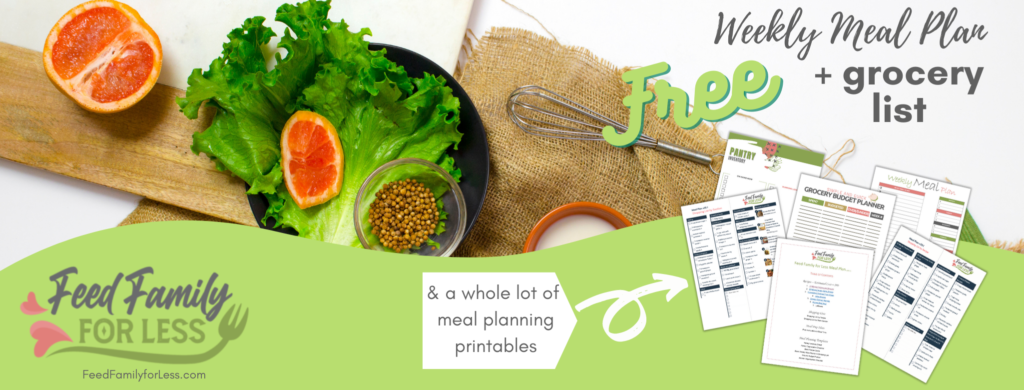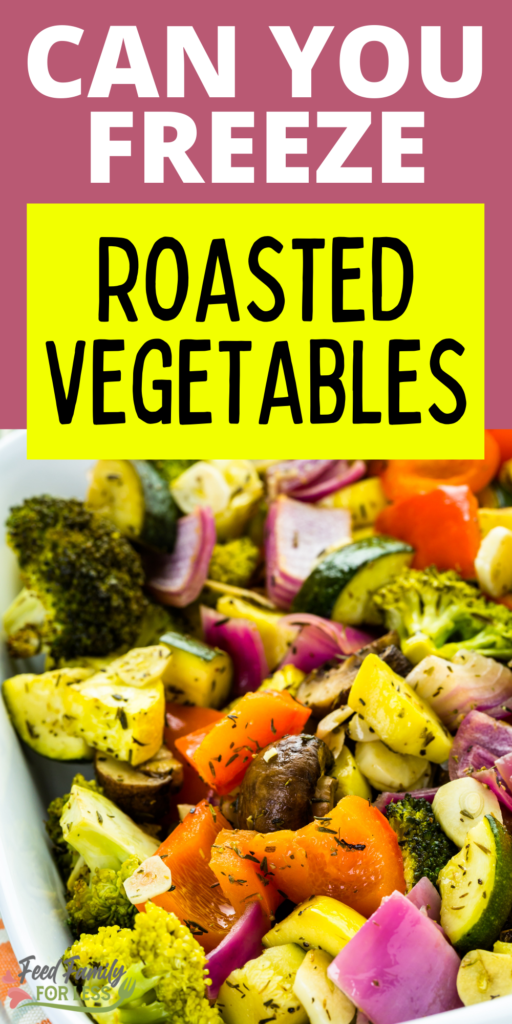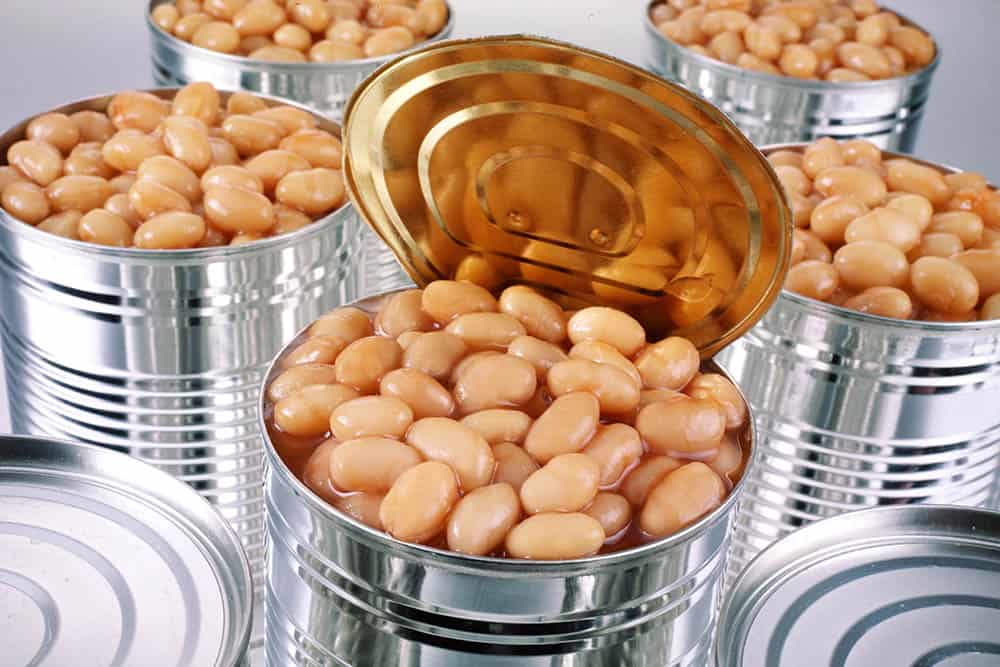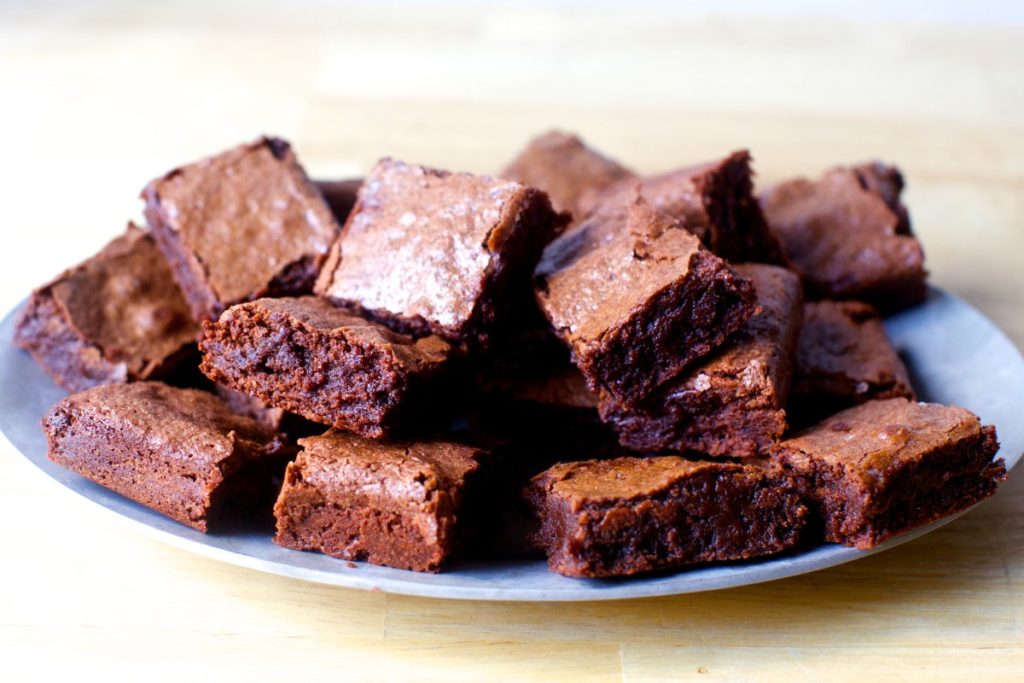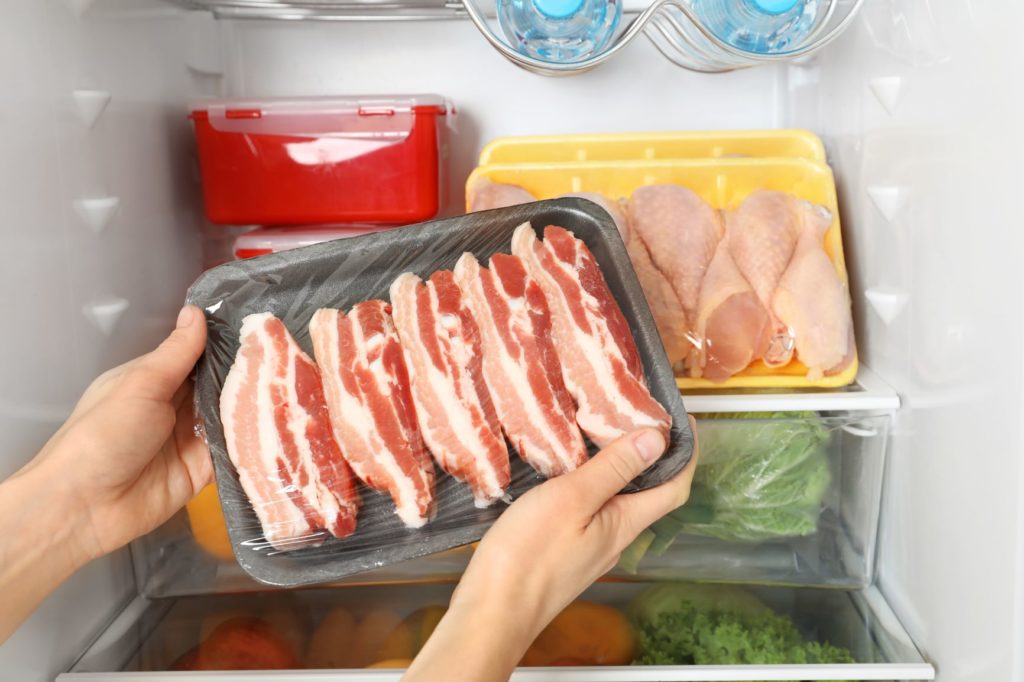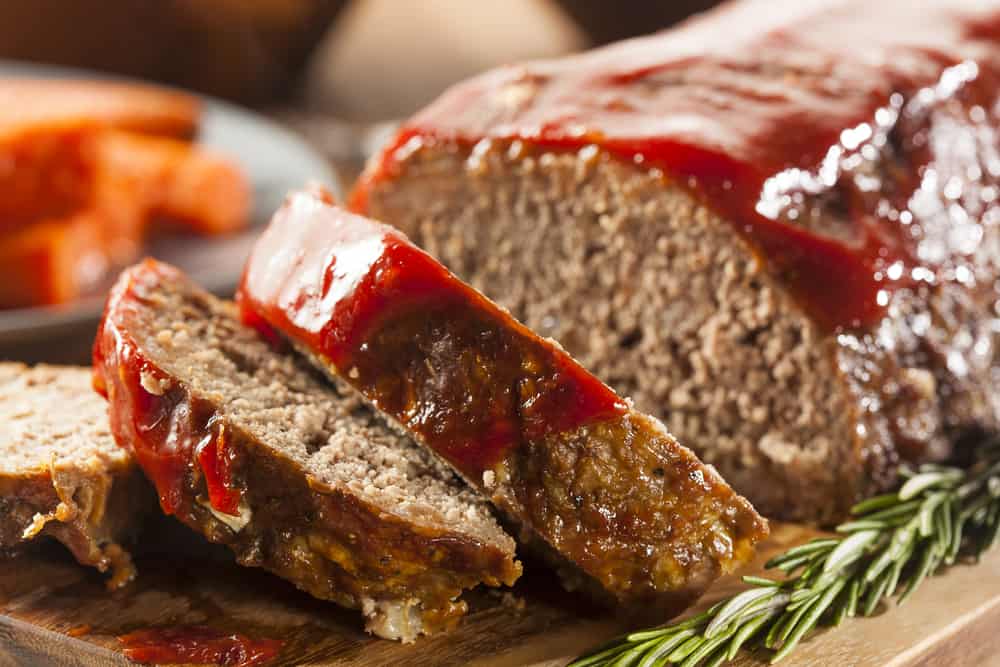Are roasted vegetables your perfect dish when you use them with either casserole, pasta, couscous salads, or soups? If yes, have you ever wondered if you could freeze roasted vegetables and extend their shelf life?
I have come across this question—can you freeze roasted vegetables a couple of times—from social media platforms to different blogs. And this doesn’t come as a surprise because roasted vegetables are loved by many and have many benefits.
In this post, I’ll step up to answer one of these disturbing questions and any other questions related to it. Hopefully, you’ll get all your questions answered at the end of this post. So without further ad, let’s dive right in.
This post may contain affiliate links. Read my disclosure policy here.
Can You Freeze Roasted Vegetables?
Yes, you can freeze roasted vegetables as this is one of the best ways to store your roasted vegetables and increase their shelf life.
Freezing your roasted vegetables can be an excellent idea, especially on busy winter nights or when you have more than enough roasted vegetables for a single meal.
Unfortunately, most fresh vegetables always end up wasted—and according to the ReFed, about 20 percent of household wastage is fresh vegetables in the US.
This is why roasting and freezing vegetables is a way to ensure that your vegetables have a longer shelf life and avoid wasting them.
You can roast and freeze most vegetables with high moisture content like peppers, tomatoes, zucchini, mushrooms, etc. However, their texture will deteriorate once you have roasted and frozen them. This is why most people mix them with lasagnas, stews, etc.
Parsnips, potatoes and carrots, however, can be roasted and frozen well without losing their texture. This is good news, especially if you have a problem with your vegetables losing their texture once frozen.
Once you freeze your roasted vegetables, you can only store them in the fridge for about three to four days and in the freezer for about six months.
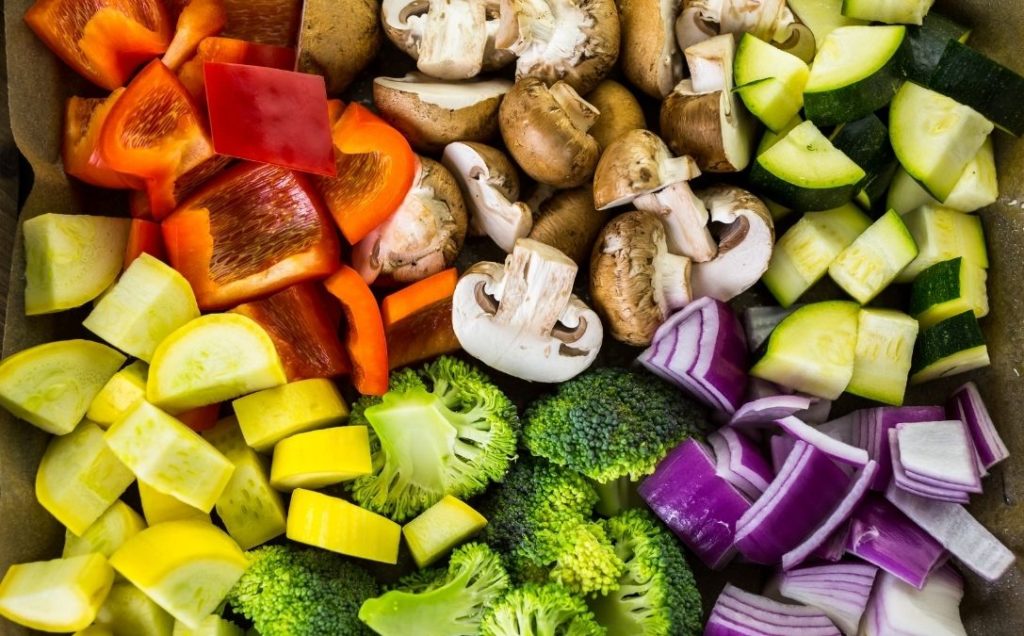
How Do I Freeze Roasted Vegetables?
Now that you know that you can freeze roasted vegetables, how then do you go about it? Below is a simple five-step guide to help you freeze roasted vegetables.
Step 1: Decide the Vegetable You Want to Use
The first step is to decide on the vegetables you’ll be using. Ensure that the vegetables you want to use are fresh, with no damaged parts or even bruises. For freshness, put your vegetables in the freezer.
That said, the best vegetables you need to consider are carrots, peas, spinach, collards, squash, cauliflower, corn, broccoli, among others. Please take note that you can also freeze celery, onions, herbs, and pepper.
Step 2: Roast Them
Next, you want to roast your vegetables. I recommend that you undercook the vegetables for about five minutes before roasting them. This guarantees perfect cooking when you reheat in the oven, ensuring an excellent dish in the long run.
If you are freezing your vegetable leftovers, you must have probably cooked them to perfection. Still, there’s no cause of alarm—you can still freeze and reheat. However, you must be wary of reheating time as foods cooked to perfection before freezing might need less time reheating.
That said, cut your vegetables into cubes of the same size, then smear coconut oil on them (you can also use olive oil) to roast. You can then add oregano, salt, or pepper if you want.
Once that’s done, spread your vegetables on a baking sheet and preheat in the oven at 400° F until they turn golden brown. The time depends on the vegetable you are preparing, but the time could range between 20 and 45 minutes.
Step 3: Cool Your Veggies
Before you freeze your vegetables, ensure that you have cooled them completely. If you don’t allow them to cool completely, the chances are that moisture will accumulate in the container you are using to freeze them. The worst part is that the excess water will get into your vegetables when defrosting them, making your vegetables soggy.
I recommend you transfer your vegetables to a separate tray before cooling them. This is because the try you use in cooking your vegetables will always have oil and leaving your vegetables in that oil can get them soggy. And taking soggy vegetables in the freezer will just make them wet even during the reheating process.
Step 4: Split Your Veggies into Portions
Before you let your roasted vegetables into the freezer, you need to split them into portions (not a must, but it could save you time). Splitting your veggies before storing them in the freezer makes it easy only to take what you need when defrosting.
Step 5: Time to Freeze Your Roasted Vegetables
You have two options when freezing your veggies—the first option is to use individual-safe containers. The second option is to use large freezer-safe containers, especially if the vegetables are flushed-freeze.
To freeze your vegetables, spread them on a tray and freeze them individually. They should freeze for about two hours before transferring them to a large container.
You should freeze your veggies individually before you transfer them to a freezer bag to minimize the roasted veggies from sticking together. This makes it easy to remove them individually as and when you need to use them.
If your freezer isn’t big enough such that it can accommodate a tray, just freeze your roasted veggies in individual freezer bags.
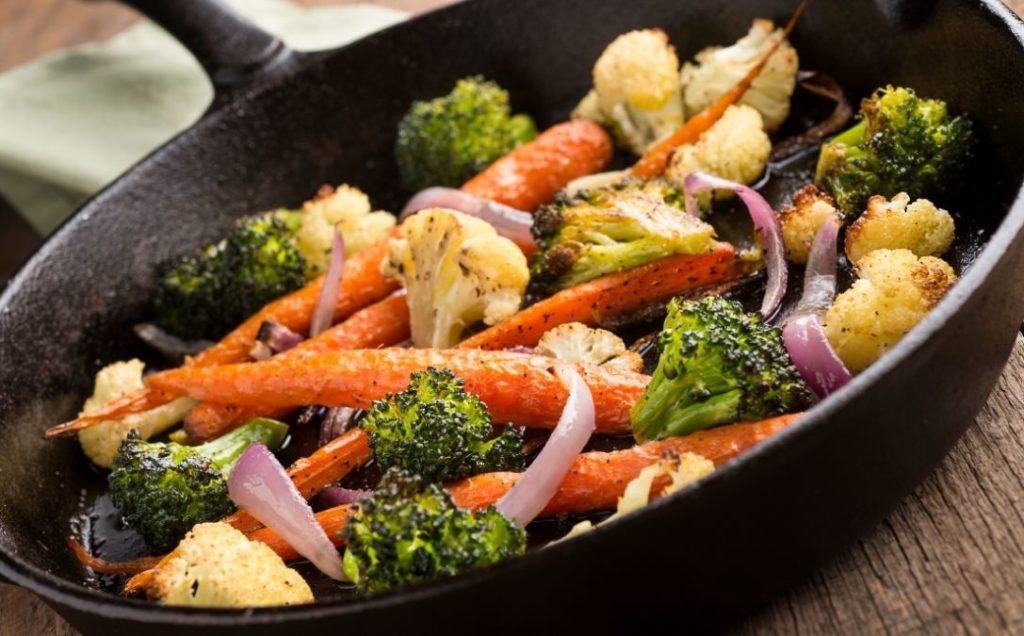
How to Reheat Roasted Vegetables—Using an Oven
The best way to reheat roasted veggies is by using an oven. While there are other methods you can rely on, most of them won’t satisfy your needs, especially when you’re using the microwave to reheat your roasted veggies.
If you are looking for a quick solution, the microwave can be your best bet. However, it won’t do much other than only to soften your vegetables and they won’t be as tasty as you might have wanted them to be.
Since your vegetables have lost their shape and have become softer, the best and most straightforward way to restore their shape is to remove excess moisture and make them crispy. Below is a step-by-step guide on how to do that:
Step 1: Preheat Your Oven to 450° F
You’ll need a higher temperature when preheating your roasted vegetables—at least 450° F.
Heating your roasted vegetables over medium heat will not do much other than just softening them.
That said, set your oven to 450° F and allow it to heat. Please don’t reheat until you are sure that the oven is hot.
Step 2: Spread Your Veggies on a Baking Sheet
You can use a baking rack or tray, depending on what you have for this step.
Depending on what you settle on, put a baking paper to ensure that your vegetables are heated on both sides.
Besides ensuring that the vegetables are heated on both sides, the baking paper will prevent the veggies from falling through the bars, which may cause a total mess.
Therefore, put some pieces of roasted vegetables on your tray or baking sheet and spread them on its surface.
Please ensure that no vegetable is on top of each other when spreading them. Additionally, arrange your veggies, ensuring that they have adequate space to warm and get crispy.
Step 3: Sprinkle a Little Olive Oil on Them
Once you have arranged the vegetables on the tray or baking sheet, sprinkle some olive oil on them to help with baking and give it an aroma. Next, put the veggies in a preheated oven and let them bake for above five minutes.
Five minutes is enough time for your veggies to warm and reclaim their texture. However, feel free to extend within a minute or two if you want to make your perfect taste—just be a little careful not to burn them.
Related Questions
1. How Do You Store and Reheat Roasted Vegetables?
The best way to store roasted vegetables is to freeze them as this could keep them for up to six months. For reheating, you can use an oven instead of a microwave. An oven will make your veggies crisp and firm.
2. Can You Roast Vegetables Ahead of Time and Reheat?
Yes, you can roast vegetables ahead of time and reheat—up to four hours earlier. First, you need to preheat your oven to 400 degrees, then find a bowl and toss your veggies with pepper, olive oil, and salt.
3. Why Are My Roasted Vegetables Soggy?
Your roasted veggies are soggy because you didn’t transfer them to a new tray after cooking them. It is always recommended that you transfer your vegetables to another tray to don’t sit for long in the oil.
4. Should You Salt Vegetables Before Roasting?
Yes, you should salt your vegetables before roasting. As a general rule of thumb, toss your veggies together with oil and salt before you begin roasting them. If you love pepper, include it before roasting.
5. What Vegetables Can I Freeze Raw?
You can freeze so many vegetables, including:
- Peas
- Spinach
- Collards
- Broccoli
- Green beans
- Kale
- Celery
- Onions
- Cauliflower
- Pepper, etc
Please note that the list can be longer than what I have included. The chances are that there are way more veggies that you can freeze raw. Just research them before making a step.
Bottom Line about Freezing Roasted Vegetables
Hopefully, I answered one of your most disturbing questions—can you freeze roasted vegetables and the answer is yes, you can. Following the steps I have given above, you can freeze your veggies in no time.
Over to you now. Please let me know what you always do with your roasted vegetables—how do you store them, or what do you do to ensure that they have a longer shelf life? If you’ve tried to refrigerate or freeze roasted veggies in the past, please let me know.
